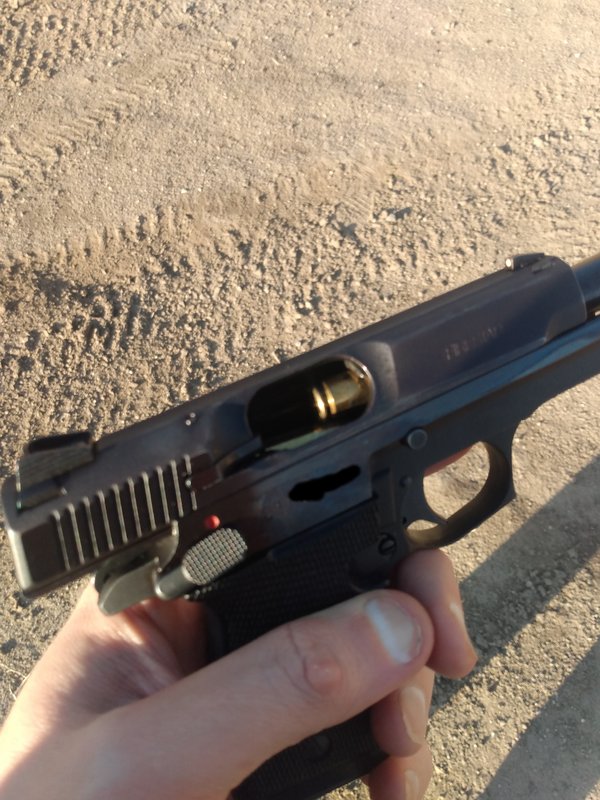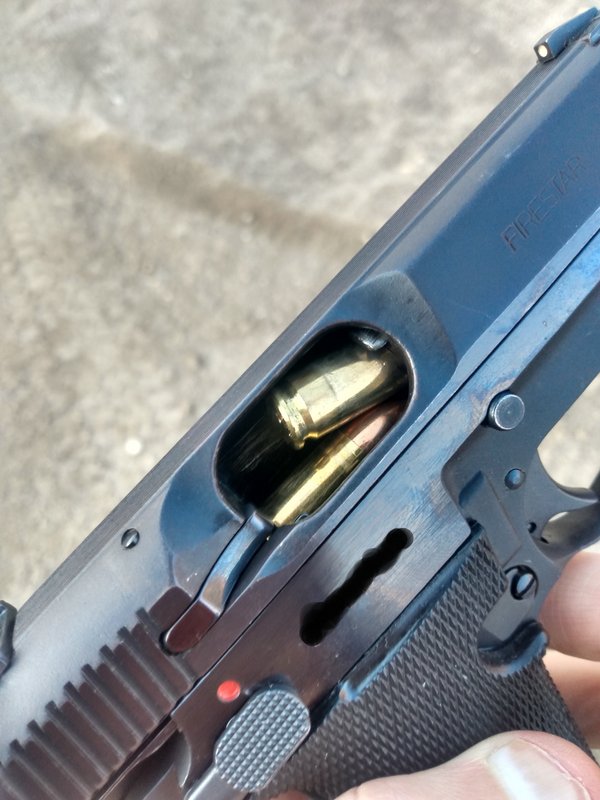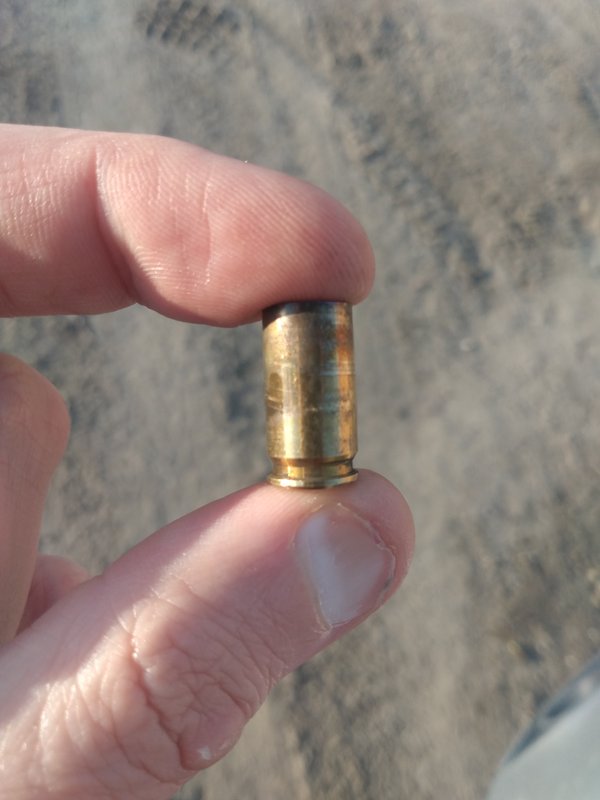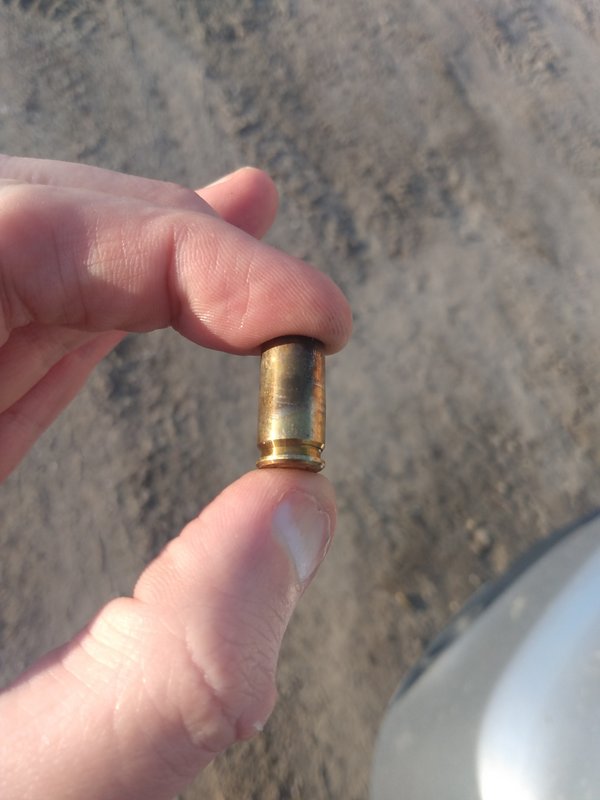Thank you everyone for all of the ideas and feedback.
Unfortunately, the problem is no longer theoretical. I tested today with three mags of geco 115gr fmj. First mag was fine. Second mag had a FTE on the 5th shot. At this point, I knew more were likely to come, so I switched from a 16lb recoil spring to a 22lb spring, just to see what would happen. Third mag encountered another FTE on the 3rd shot.
I guess the gun was purchased in the mid-1990's, the owner fired a few boxes of ammo and couldn't get it to work, and it then became ballast for his gun safe for the next 25 years, until now. Would explain the overall nice condition of the bluing.
Okay, so I intend this to be the first thread on the entire internet where a real fix for this issue is described. Or I go down in flames.
Here's what the FTE's looked like:
First one:
Second one:
The brass on these FTE cartridges have lines that definitely look like "rings."
Inside the chamber, I can definitely see areas in the forward half of the chamber that are more irregular than others, and which accumulated more residue from the first few mags.
When the fired cases are put back into the chamber, they do seem to have quite a lot of friction when they are fully forward. Not sure how unusual this is, though.
I like the idea of kind of "lapping" the chamber with an abrasive of some kind, before I use a rotary tool. I have some 1200+ grit sandpaper as well as some 3000 grit diamond paste. Thinking about using one or more of these forward and back, and then following up with a dremel and flitz.
Any further advice or observations are appreciated. BTW, the extractor seems to be working perfectly well -- tight but not too tight.





